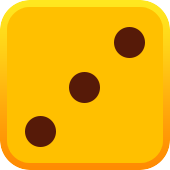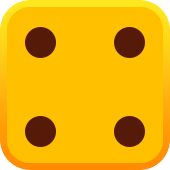












A great poker plan starts with numbers, not hunches. By translating cards and chips into clear percentages, you stop guessing and start making disciplined calls, raises, and folds. This guide explains the core ideas behind odds, how to compute them at the table, and when to trust the math over emotion. You’ll see real probabilities, quick-reference tables, and practical steps you can apply in your next session to turn uncertainty into informed, profitable action.
Poker odds quantify how often a specific event—like improving a draw or being dealt a premium hand—will occur. They are typically expressed as a ratio (e.g., 2:1) or as a percentage. In day-to-day decisions you’ll compare the odds of poker outcomes against how much you must invest to see the next card. Remember that raw chances matter only when weighed against price, position, and stack depth.
Odds compare “failures to successes” (e.g., 2:1), while probabilities state “successes out of all possibilities” (e.g., 33.3%). You can convert between them quickly: probability = odds / (1 + odds) when odds are expressed as “to 1”. In live play, most players think in probabilities because they map directly to winning probabilities. Use either language consistently to avoid mistakes on the fly.
Pot odds tell you whether a call is immediately poker odds profitable: Pot Odds = (Amount to Call) ÷ (Final Pot after Calling). Implied odds extend this by estimating future chips you can win when you hit. Reverse implied odds warn how much you might lose when you hit but are dominated. Always compare required equity to your draw’s actual equity before committing chips.
|
Scenario |
Pot Size Before Call |
Call |
Pot After Call |
Pot Odds |
Break-Even Equity |
|
Small stab |
$60 |
$20 |
$100 |
0.20 |
20.0% |
|
Single raise |
$150 |
$50 |
$250 |
0.20 |
20.0% |
|
Multiway |
$220 |
$80 |
$380 |
0.21 |
21.1% |
|
3-bet pot |
$300 |
$100 |
$500 |
0.20 |
20.0% |
Implied odds matter most with draws that win hidden, like straights and flushes. When stacks are shallow, rely more on clean pot odds; when deep, implied odds can justify thinner peels. Keep notes on opponents who overpay when draws land—that’s where your edge statistical lives.
This section gathers frequent situations and their baseline chances so you’re not estimating under pressure. Knowing these numbers lets you benchmark decisions across streets and positions. Use them to calibrate intuition, then refine using specific blockers and runouts. When in doubt, anchor to these odds poker references and adjust for table dynamics.
With a 9-out flush draw on the flop, the odds of hitting by the river are about 35%. The chance to hit on the turn is 9/47 ≈ 19.1%; if you miss, the river chance is 9/46 ≈ 19.6%. From the turn with 9 outs you’ll hit on the river ≈ 19.6%. These baselines frame calls when you face bets priced around one fifth of the pot, which is common odds on poker threshold.
|
Draw Stage |
Outs |
Hit on Next Card |
Hit by River (from Flop) |
|
Flop→Turn |
9 |
19.1% |
— |
|
Turn→River |
9 |
19.6% |
— |
|
Flop→River (two cards) |
9 |
— |
35.0% |
To refine, remove dirty outs (e.g., a card that also pairs the board giving opponents boats). Add combo-draw equity when overcards or straight draws accompany the flush. If your draw is obvious, discount implied odds; if it’s disguised, upgrade them.
If you flop a set, you’ll make a full house or quads by the river about 33.4%. Flopping two pair with your hole cards converts to a full house by the river roughly 16.7%. Turning trips leaves one card to come, yielding ~21.7% to boat up. Use these values to decide whether to value-bet thinly on safe bricks or to slow down on coordinated boards—another moment to lean on odds poker benchmarks.
|
Starting Point |
Cards to Come |
Chance to Make Full House by River |
|
Flopped set |
Turn+River |
33.4% |
|
Flopped two pair |
Turn+River |
16.7% |
|
Turned trips |
River only |
≈21.7% |
On paired boards, beware reverse implied odds when your “boat” is the lower pairing and villain has better combinations. Size bets so worse hands call and better hands raise; fold when the value range crushes your equity.
Being dealt A♠A♥ preflop happens once in 221 hands, about 0.45%. Against one random hand, A-A is ~85% to win all-in preflop; versus two opponents it drops but remains dominant. These poker winning odds don’t excuse slow-playing on wet textures—protect equity with sizing that thins the field. Track blockers and stack sizes to pick lines that extract value without inviting dominated calls.
Start by translating price into required equity, then compare it to your actual draw or hand strength. Next, adjust for position, stack-to-pot ratio, and opponent tendencies. When equities run close, prefer lines that realize equity (calls in position, smaller pots out of position). Over time, disciplined application of these steps compounds your statistical edge into real profit.
A quick approximation is the “Rule of 2 and 4”: with one card to come, outs × 2 ≈ equity%; with two cards, outs × 4 ≈ equity%. For precision, count clean outs only, then refine by board pairing and domination risks. When time allows, compare your estimate with a hand chance calculator to calibrate accuracy. In study sessions, run common spots repeatedly until your internal estimates align with solver outputs.
|
Spot |
Outs |
One Card to Come (≈) |
Two Cards to Come (≈) |
|
Open-ended straight |
8 |
16% |
32% |
|
Flush draw |
9 |
18% |
36% |
|
Overcards (2) |
6 |
12% |
24% |
|
Combo draw (OESD+FD) |
15 |
30% |
60% |
Use blockers to tweak: holding key ranks reduces opponents’ strong combos. Remember that equity realization differs: 36% on paper can under-realize out of position in multiway pots.
Expected Value (EV) = (Equity × Final Pot) − ((1 − Equity) × Cost). Calls are good when EV ≥ 0; raises add fold equity to the mix. Compare multiple lines—call, raise, or fold—by plugging realistic assumptions for continuation ranges. Train judgment off-table so in game you default to lines supported by the best poker odds rather than impulse.
|
Decision |
Equity |
Final Pot if Win |
Cost to Continue |
EV |
|
Call with 9-out FD |
35% |
$500 |
$120 |
+$5 |
|
Raise semi-bluff |
39% |
$740 |
$220 |
+$13 |
|
Fold |
0% |
$0 |
$0 |
$0 |
EV changes fast with price; a small size reduction can move a marginal fold into a profitable call. Keep mental thresholds (e.g., “9-out draw wants ≈20% price”) to simplify.
Use structured references to speed decisions in real time. Pre-session, build personal charts that reflect your pool, then iterate as games evolve. In brick-and-mortar rooms the math is the same as online; only pacing and tells differ, so casino poker odds don’t magically change. Keep one master sheet for preflop, one for draw equities, and one for common all-in matchups.
Practice with an equity engine and drill standard matchups until numbers become reflexive. Many sites offer free poker odds tools that let you input ranges and boards to see precise equities. In reviews, tag tricky spots, replay them with tighter and wider villain ranges, and note sensitivities. The goal is to recognize when small range shifts flip a decision.
Charts prevent costly preflop leaks by standardizing opens, calls, and 3-bets. Start tight in early position, widen with position, and adjust for rake and stack depths. Use color codes for opens, folds, and mixed actions, and note deviations for passive tables. When uncertain in marginal nodes, lean on odds poker heuristics and avoid dominated calls.
|
Group |
Examples |
Open (6-max) |
Typical 3-Bet vs EP |
|
Premium |
AA, KK, QQ, AKs |
Always |
Always |
|
Strong |
AQs, AKo, JJ-TT |
Mostly |
Mix vs tight |
|
Speculative |
A5s-A2s, KQs-KJs, 98s |
Position-dependent |
Rare |
|
Marginal |
AJo, KQo, small pairs |
Late only |
Seldom |
Balance charts with table reads: widen vs nits, tighten vs aggro squeezers. Track outcomes and revise monthly so your preflop map stays current. Before you play, make sure to read the terms on the bonus page so you know the wagering requirements.




